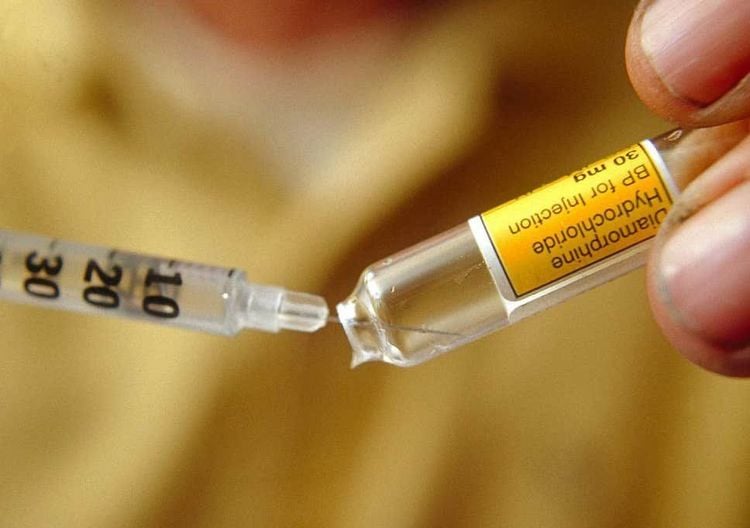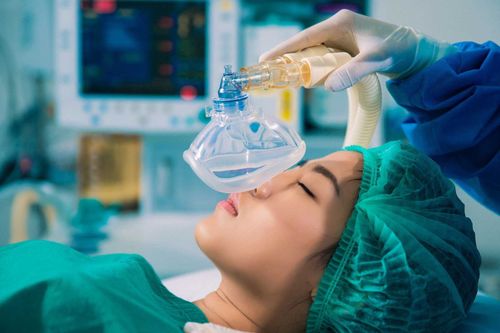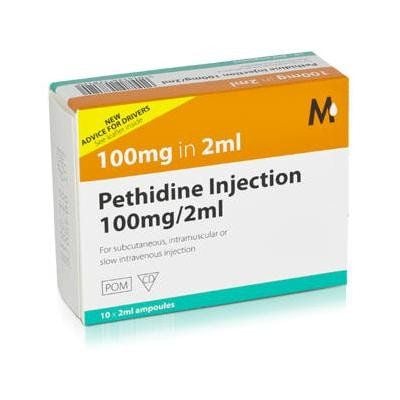This is an automatically translated article.
The article is professionally consulted by Specialist Doctor I Tran Thi Ngat - Department of General Surgery - Vinmec Danang International General Hospital.
Thoracic surgery is a surgical procedure that requires anesthetic measures such as anesthesia. Anesthesia needs to be performed correctly because there can be many dangerous complications for the patient, the most serious of which is death. Below are the common anesthetic methods in thoracic surgery.
1. 4 types of anesthesia, the most common anesthesia
Before we get into the different types of anesthesia used in thoracic surgery, let's take a look at the four most common types of anesthesia and anaesthesia.Local anesthesia Local anesthesia, also known as local anesthesia, is a method of putting numbing medicine near the area to be operated on. This is a method to significantly reduce pain, but local anesthetics do not work to reduce stress or anxiety for patients.
Regional anesthesia Regional anesthesia is used when the area to be anesthetized is large and has many nerves. Anesthesia will be injected into the area to be operated on. For example, arm surgery, people will inject anesthetic into the armpit to numb from the armpit down to the entire patient's arm.
Spinal anesthesia Anesthesia is injected into the spinal nerve roots, it has a broad anesthetic effect and is often used for cesarean sections or abdominal surgeries. In addition, spinal anesthesia is also used in surgery of lower abdomen such as thighs and knees.
Both methods of regional anesthesia and spinal anesthesia, the patient does not feel anything about the surgical process. After being injected with local anesthetic, the patient will lose sensation in the area being numbed, so they will not feel any pain.
General anesthesia This method uses anesthetic, analgesia, the patient will be unconscious and will not feel pain during surgery. You may need to take some muscle relaxants during surgery.
This method has some side effects such as causing patients to have headaches and nausea after waking up. However, these symptoms can all be mitigated to a minimum.

Thuốc gây mê tủy sống được tiêm vào các rễ thần kinh cột sống
2. Method of anesthesia, anesthesia in thoracic surgery
Anesthesia for thoracic surgery includes general anesthesia using intravenous anesthetics that can be combined with volatile anesthetics and thoracic epidurals with anesthesia.The most common method is to use intravenous anesthetic, a short-acting pain reliever to initiate anesthesia, then use a muscle relaxant, to maintain anesthesia can use an volatile anesthetic or an intravenous anesthetic.
Halogenated volatile anesthetics are widely used because of their nonspecific bronchodilator effects and do not cause increased pulmonary shunts. They also have the advantage of rapid clearance, so they can remove the ventilator as well as extubate the endotracheal tube early in thoracic surgery.
Anesthetics such as sevoflurane are widely used in thoracic surgery because they cause less hemodynamic disturbances and airway irritation in patients. In addition, nitrous oxide is also used to reduce the dose of volatile anesthetics, but caution should be taken when using this drug at different times to avoid increased pulmonary shunt and hypoxemia.
Morphine pain relievers are used in many cases during and after surgery to help patients reduce pain, help reduce the dose as well as limit the side effects of anesthetic drugs.
With muscle relaxants, should choose drugs that cause less bronchospasm, less esmeron secretion, tracrium and do not accumulate.

Thuốc giảm đau họ morphin được sử dụng nhiều ở trước và sau phẫu thuật
3. Endotracheal anesthesia for thoracic surgery
Endotracheal anesthesia is the most commonly used method in thoracic surgery. This is an anesthetic technique that uses an endotracheal tube to maintain the patient's breathing, helping to keep the airway open. This method makes tracheal suction easy and can control the patient's breathing during surgery. Under endotracheal anesthesia, the patient will also lose sensation and consciousness, but the patient can still breathe on his own or use a ventilator through the endotracheal tube.This method is not only used for thoracic surgery, but also used in many other surgeries such as: surgeries on the head, jaw, face, ears, nose, throat, surgery on the upper abdomen , pelvic surgery, uterus.
With long surgeries, it is necessary to actively resuscitate and be careful with cases with the risk of complications during surgery. In addition, this method of anesthesia needs to be combined with muscle relaxants and carefully controlled airways during surgery.
Relative contraindications of endotracheal anesthesia:
Patients with respiratory tract infections Patients with laryngitis, laryngeal cancer Patients with severe laryngeal tuberculosis Medical facilities do not have enough equipment, equipment and expertise made

Gây mê nội khí quản không được chỉ định khi bệnh nhân bị nhiễm trùng đường hô hấp nặng
Some other complications such as gastric juice overflowing into the lungs or the process of placing a tube that damages the teeth, mouth, and throat.
Thoracic surgery is a major surgery and there are always potential risks and complications during and after surgery. Therefore, it should be done at reputable medical facilities with a team of highly qualified doctors with many years of experience to avoid unfortunate risks that may occur.
Vinmec International General Hospital is one of the hospitals that not only ensures professional quality with a team of leading medical doctors, modern equipment and technology, but also stands out for its examination and consultation services. comprehensive and professional medical consultation and treatment; civilized, polite, safe and sterile medical examination and treatment space.
Customers can directly go to Vinmec Health system nationwide to visit or contact the hotline here for support.














